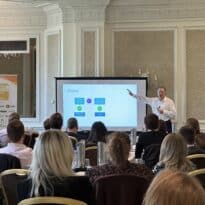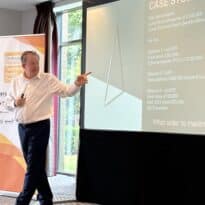Where advice firms can be seen to make a difference is ensuring clients are planning properly for their retirement, says Tyla Phillips of AHR Private Wealth
According to the ONS, nearly half (45%) of the population don’t feel confident about what their standard of living will look like in retirement. The problem is that many have no idea what’s in their pension, what fees they’re paying, or what they need for a comfortable retirement.
As a result, people can easily overestimate their pension income and find themselves disappointed by their funds, or worse, short of the cash needed to fund their aspirational later life.
Planning for retirement needs to go beyond making enough National Insurance contributions. It is vital that savers put other provisions in place to generate retirement income, including paying considerably into a private pension, and/or owning appropriate assets that could provide an additional income alongside a pension.
Of course, the Covid-19 pandemic has potentially made it harder for many to make pension contributions by worsening their financial position. Others have likely been tempted to pause their pension contributions in the interest of boosting their income during a financially challenging period. Crisis disruption has, of course, shown the true importance of future proofing our finances, but that is not to say it has made it any easier for the average person to invest in their retirement.
Royal London found that 40% of millennials have chosen to pause or stop their pension contributions because of Covid-19. It’s easy to overlook these younger people when it comes to retirement, but that’s short-sighted. The benefits of compound interest on early career savings cannot be overstated, and those who don’t save enough in their early working lives risk feeling compelled to take on more risk with their pension investments later, to make up for lost time.
It’s also worth noting that providers often do little to help savers in the later stages of retirement. Decumulation pathways are clunky and unspecific, and thanks to pension freedoms, advisers are left having to shoulder the responsibility of explaining the finer and more technical aspects of retirement.
Proper planning
So, how can we ensure clients are planning properly for retirement?
The first thing to consider is what a client is paying in fees, and how to go about reducing those if they’re at the more expensive end of the market. Most modern pensions have competitive rates that are generally under 1%, but older corporate DC schemes can have fees as high as 3%, or more. Good planning ensures a client is making the most of the money they have, so reducing fees is an excellent place to start.
Similarly, advisers should put effort into consolidating the pension savings of clients if they haven’t already. The typical person has ten jobs in their lifetime and could have as many separate pots. Any one of those could be invested in a way that doesn’t suit the client’s needs or could be forgotten about. Condensing pots can make the retirement planning process easier, but knowing when to do so, or which to choose as the remaining pot certainly requires a professional eye.
Tools like cashflow modelling can also be useful, since they can help clients visualise their likely financial position in retirement. In some cases, a client may be pleasantly surprised by their retirement outlook, meaning they can finish work earlier than planned. In this scenario, not only have we helped with retirement planning, but we’ve also helped a client to achieve greater financial wellbeing.
Too many clients only begin planning for later life as they approach retirement, but better outcomes could be achieved if provisions are put in place at an earlier stage. A common mistake among those expecting to retire at 55, for example, is to avoid withdrawing pension funds until they turn 65. The opportunity-cost is likely to be significant here, as most pension schemes will automatically move towards low-risk assets or cash by their retirement date, meaning they are not making the most of growth opportunities.
Ultimately, we need to develop a long-term relationship with our clients and make it clear why later life planning is not just a once-and-done process. Planning early for retirement will not only give clients the chance to maximise growth opportunities, but it will also help them to create a plan that can be adapted to meet their changing needs. We must move from ‘retirement planning’ to ‘life planning’ to encourage engagement from an earlier age and when individuals are making other key financial decisions, such as purchasing a home.
This article was first published in the July/August 2021 issue of Professional Paraplanner



































